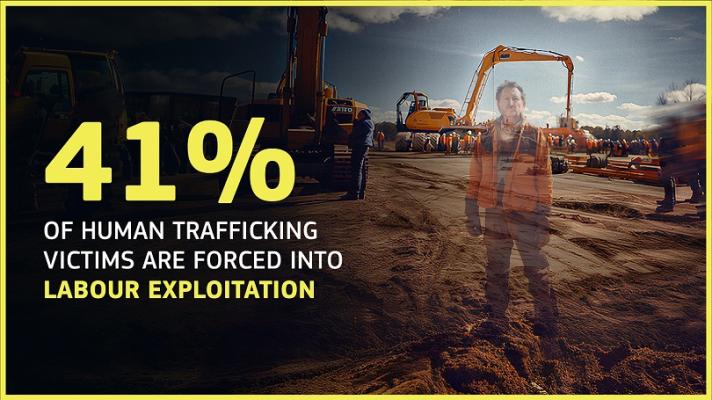End human trafficking
This campaign aims to help end the trafficking of human beings by raising awareness of this type of crime, which deprives people of their fundamental rights.
In 2022, over 10 000 victims of human trafficking were registered in the EU. But many more go undetected. 37% are EU citizens, who fall victims to different forms of trafficking such as sexual exploitation, labour exploitation, and forced begging.
Human trafficking is a violent offence committed by individuals or organised criminal networks that are operating internationally. It may generate up to EUR 14 billion per year for traffickers, for sexual exploitation alone.
Ending human trafficking is a priority for the EU and its partners. Every person’s contribution could be decisive in the fight against trafficking in human beings.
Break the invisible chain
There is an invisible chain that links trafficking networks, victims and those who use trafficked victims' services, often unknowingly.
The first step to break the chain is to raise awareness – prevent trafficking in the first place by informing potential victims and making the victims of this crime visible.
But there is more that you can do:
- recognise the signs that somebody might be a victim of human trafficking;
- be careful not to use the services of trafficked people;
- report a suspected case of human trafficking;
- provide immediate support to the victims themselves.
You can also help raise awareness by becoming a part of the ‘End human trafficking. Break the invisible chain’ campaign. All campaign materials are free to use and can be found in the resources below.

Detect the signs that someone might be a victim of human trafficking
- Is the person escorted whenever he/she goes to and return from either work or other outdoor activities?
- Can the person speak freely or is someone else communicating for them?
- Does the person appear disconnected from family, community, or friends?
- Does the person have very few clothing items?
- Does the person sleep where he/she works?
- Does the person depend on someone else (their employer) for accommodation and transportation? Does the person have freedom of movement?
- Does the person live in unsuitable, substandard and overcrowded places, e.g., in derelict or industrial buildings?
- Is the person giving his/her earnings to someone else?
- If it concerns a child: does the child look intimidated and behave in ways that do not correspond with children of that age?
- Is the person in possession of their own identification and travel documents?
Not all indicators listed above are present in every human trafficking situation, and the presence or absence of any of the indicators is not necessarily proof of human trafficking or lack thereof.
- 2 FEBRUARY 2024
EU actions against trafficking in human beings
Find out more on EU policy and actions to combat human trafficking.
Multilingual Resources
Use the campaign material and help raise awareness.
Together we can put an end to the trafficking of human beings.
- 1 DECEMBER 2023
- Downloadбългарски(22 MB - ZIP)
- Downloadespañol(21 MB - ZIP)
- Downloadčeština(22.94 MB - ZIP)
- Downloaddansk(22.75 MB - ZIP)
- DownloadDeutsch(22.98 MB - ZIP)
- Downloadeesti(22.74 MB - ZIP)
- Downloadελληνικά(22.95 MB - ZIP)
- Downloadfrançais(24.68 MB - ZIP)
- Downloadhrvatski(23 MB - ZIP)
- Downloaditaliano(23.9 MB - ZIP)
- Downloadlatviešu(24.81 MB - ZIP)
- Downloadlietuvių(23.24 MB - ZIP)
- Downloadmagyar(51.31 MB - ZIP)
- DownloadMalti(22.95 MB - ZIP)
- DownloadNederlands(21.85 MB - ZIP)
- Downloadpolski(23.08 MB - ZIP)
- Downloadportuguês(23.12 MB - ZIP)
- Downloadromână(50.66 MB - ZIP)
- Downloadslovenčina(23.11 MB - ZIP)
- Downloadslovenščina(23.08 MB - ZIP)
- Downloadsuomi(16.04 MB - ZIP)
- Downloadsvenska(22.93 MB - ZIP)


